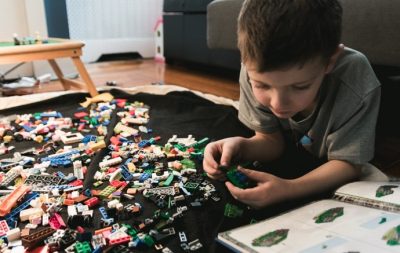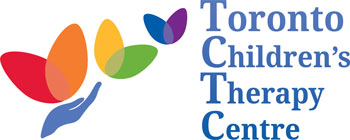Written by: Timothy Spadzinski, Occupational Therapy Student Intern, University of Toronto
Edited by: Lizette Alexander, OT Reg. (Ont) with appreciation
In our first blog on Motor Learning, we introduced the question of why we DO things in certain ways. If you think about it, how often would you say you pay attention to the movements you are making? How often do you think about what makes up a movement? So far in our series on Exploring Our Actions, we have explored a number of topics that have helped us better understand the connections between our movements and our brain. More specifically, in our last blog post on Developmental Coordination Disorder (DCD), we discussed how one possible explanation for coordination issues may involve a child’s difficulty in planning their movements. These difficulties influence the key factors associated with Motor Planning: motor control and motor coordination. In today’s blog, we will discuss an aspect of motor control that helps a large portion of child development – Fine Motor Skills.
What are Fine Motor Skills?
Fine motor skills give a child the ability to use and coordinate small muscle groups in the hand and fingers to do precise movements and actions. This skill is critical for school-aged children because it allows them to participate in school-related tasks (i.e., writing tests, tracing and cutting, building crafts, etc.), and is also important for daily, at-home tasks (i.e., getting dressed, combing hair, brushing teeth, etc.) (Wilmot, n.d.; Kid Sense, 2020; Logsdon, 2020). Since fine motor skills are used in everyday life, its development should not be overlooked!
Not only are these skills important for motor development, research shows us that they also have a role in cognitive development. Performing activities with hands and fingers allows a child to explore and develop sensory processing, problem-solving, sequencing, memory, language skills, and attention among others. For example, when doing a puzzle, a child develops:
- Visual processing skills to scan, sort, find, and orient the puzzle pieces based on colour and shape.
- Problem-solving strategies to find and place the puzzle piece that fits best.
- Memory and sequencing skills for puzzles that need pieces placed in a certain order.
- Spatial communication skills when working with another person to “turn”, “flip”, and “rotate” the puzzle piece.
In order to assemble a puzzle, a child needs a pincer grasp to pick up the puzzle piece, and for smaller pieces, in-hand manipulation skills to rotate and manipulate the piece in the same hand before placing them on the board. A child with strong fine motor skills can focus on the cognitive demands of the activity rather than the physical demands, avoiding frustration, and experience enjoyment out of successfully completing an activity. (ADVANCE, 2018; Martzog, Stoeger, & Suggate, 2019; Swartz, 2018).
a pincer grasp to pick up the puzzle piece, and for smaller pieces, in-hand manipulation skills to rotate and manipulate the piece in the same hand before placing them on the board. A child with strong fine motor skills can focus on the cognitive demands of the activity rather than the physical demands, avoiding frustration, and experience enjoyment out of successfully completing an activity. (ADVANCE, 2018; Martzog, Stoeger, & Suggate, 2019; Swartz, 2018).
Challenges
If a child struggles with fine motor skills, doing fine motor activities may become frustrating, resulting in avoidance and lowered self-esteem (Wilmot, n.d.; Kid Sense, 2020). Parents may interpret the child’s avoidance as a lack of attention when it is in fact because of their fine motor difficulties. Challenges may become clearer in the school setting when being compared to other children of the same age in a similar setting (Wilmot, n.d.). Other signs of fine motor difficulties include:
|
|
Key Factors in Developing Fine Motor Skills
- Hand Dominance: Regularly using the same hand helps to develop more precise skills
- Hand Strength: Strength allows us to properly control a movement/object
- Hand-Eye Coordination: Ability to see something and use that information to direct what our hands are doing (i.e., writing letters, throwing/catching a ball, etc.)
- Hand Separation: Motor control that allows use of the ring and pinky fingers to stabilize the hand while using a combination of the thumb, index, and middle fingers to do things (i.e., pincer grasp – thumb and index; tripod grasp – thumb, index, and middle)
- Dexterity: Efficient and controlled use of everyday tools (i.e., pencil, toothbrush, etc.)
- Body Awareness (Proprioception): Muscles and joints send information to the brain to help make us aware of where our body parts are to accurately control movements
(Kid Sense, 2020; Logsdon, 2020)
Strategies
- Introduce simple fine motor activities at home. Make sure your child enjoys them so they are motivated to participate – i.e., puzzles, mazes, Legos, crafs, etc.
- Gradually increasing difficulty will challenge their problem-solving skills and help refine movements – i.e., smaller puzzle pieces, larger mazes, bigger Lego structures, etc.
- Encourage them often! Providing positive reinforcement goes a long way to helping a child stay motivated to practice and try new things!
(Wilmot, n.d.; Kid Sense, 2020; Logsdon, 2020)
How TCTC Can Help:
To summarize, fine motor skills are critical in everyday life, both for motor and cognitive development, and difficulties in these skills should not be overlooked!
Given the key factors and challenges above, Occupational Therapists (OTs) are able to assess which of these factors are having a role in a child’s fine motor difficulties. Whether it’s difficulties in strength, coordination, body awareness, or any other factor, OTs can determine what steps to take to help them develop these skills further.
If you believe your child could benefit from a focused approach to developing their fine motor skills, please contact us about how our OTs can help you and your child! If you would like more information, take a look at our available OT programs!
References
Wilmot, K. (n.d.). Fine motor skills: What you need to know. Understood. Retrieved from https://www.understood.org/en/learning-thinking-differences/child-learning-disabilities/movement-coordination-issues/all-about-fine-motor-skills
Kid Sense. (2020). Fine motor activities. Retrieved from https://childdevelopment.com.au/areas-of-concern/fine-motor-skills/fine-motor-activities/
ADVANCE Healthcare Network. (2018). The association between childhood motor and cognitive development. Elite Learning. Retrieved from https://www.elitecme.com/resource-center/rehabilitation-therapy/the-association-between-childhood-motor-and-cognitive-development/
Logsdon, A. (2020). Best ways to improve fine motor skills. Verywell Family. Retrieved from https://www.verywellfamily.com/what-are-fine-motor-skills-2162037
Martzog, P., Stoeger, H., & Suggate, S. (2019). Relations between preschool children’s fine motor skills and general cognitive abilities. Journal of Cognition and Development, 20(4), 443–465. doi: https://doi.org/10.1080/15248372.2019.1607862
Swartz, R. (2018). Five things children gain from puzzle play. Illinois Early Learning Project. Retrieved from https://illinoisearlylearning.org/blogs/growing/puzzle-play/
